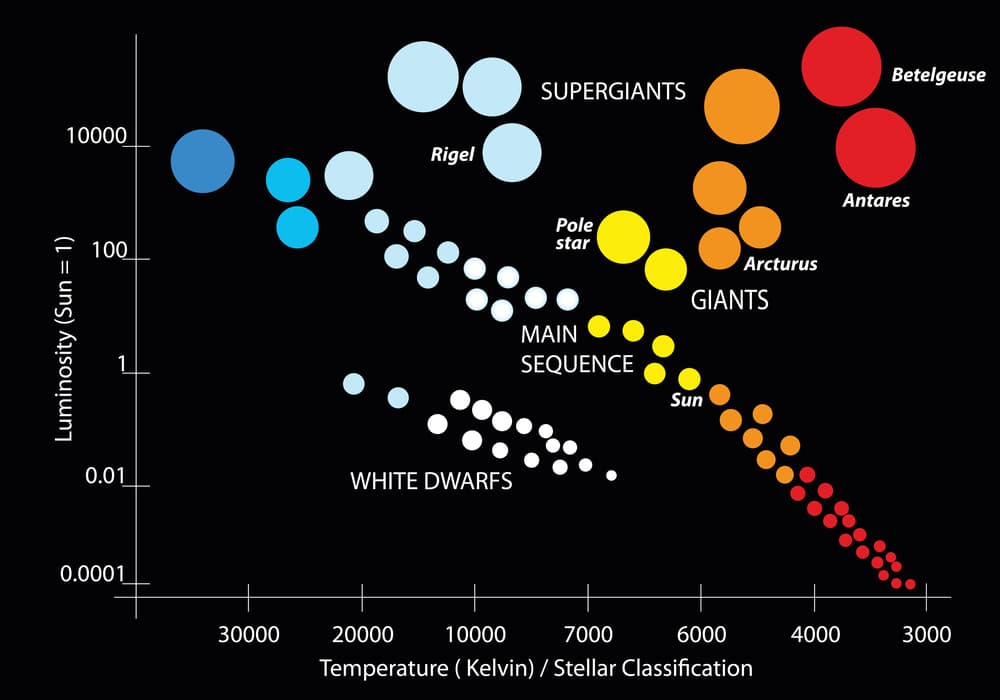Greetings, fellow explorers! Captain Nova here, continuing our cosmic journey on Day 23 of “100 Days of Space Exploration.” Yesterday, we explored the life cycle of a star, from its fiery birth to its dramatic end. Today, we dive into the incredible variety of stars that populate our universe. From tiny, long-living red dwarfs to massive, short-lived hypergiants, each type of star tells a unique story. Let’s set course for the fascinating world of stellar diversity!

What Defines a Star?
A star is a massive, luminous sphere of plasma held together by gravity, with nuclear fusion occurring at its core. The fusion of hydrogen into helium generates immense energy, which powers the star and produces the light and heat we see. But not all stars are the same! Their differences depend on their mass, temperature, brightness, and lifespan.
Main Types of Stars
1. Protostars – The Birth Stage
Before a star officially becomes a star, it begins as a protostar—a contracting cloud of gas and dust within a nebula. Protostars are hot, dense, and on their way to igniting nuclear fusion in their cores. If they gather enough mass, they evolve into fully-fledged stars; otherwise, they may become brown dwarfs (failed stars that never ignite fusion).
2. Main Sequence Stars – The Prime of a Star’s Life
Once fusion begins, a star enters the longest phase of its life, known as the main sequence. Our Sun is currently in this stage, converting hydrogen into helium at a steady rate. The main sequence stars are classified based on their temperature and brightness, using the OBAFGKM classification system:
- O-type Stars: The hottest and most massive, shining blue with temperatures above 30,000 K. These stars burn quickly and often end in supernovae.
- B-type Stars: Blue-white stars, slightly cooler than O-type but still extremely luminous.
- A-type Stars: White and very bright, with temperatures around 7,500–10,000 K.
- F-type Stars: Yellow-white, slightly hotter than our Sun, with temperatures between 6,000–7,500 K.
- G-type Stars: Like our Sun, these stars are yellow and have moderate temperatures of about 5,200–6,000 K.
- K-type Stars: Orange and cooler than the Sun, often found in long-lived planetary systems.
- M-type Stars (Red Dwarfs): The smallest and coolest of main sequence stars, shining dimly for trillions of years.
3. Red Dwarfs – The Most Common Stars
Red dwarfs make up about 70% of the stars in the universe! These cool, dim stars burn their fuel slowly and can live for trillions of years. Though faint, their longevity makes them fascinating targets for studying long-term planetary evolution.
4. Giants and Supergiants – The Expanding Stars
When a main sequence star exhausts its hydrogen fuel, it expands into a red giant (if it’s a smaller star like the Sun) or a red supergiant (if it’s much more massive). These stars glow brightly but are unstable, eventually shedding their outer layers or collapsing into a supernova.
5. White Dwarfs – The Fading Remnants
After a red giant sheds its outer layers, the remaining core becomes a white dwarf. These stellar remnants are incredibly dense, with the mass of a star packed into a volume the size of Earth! Over billions of years, they slowly cool into black dwarfs, but the universe is not old enough for any to have formed yet.
6. Neutron Stars – The Ultra-Dense Cores
For massive stars that end in a supernova, the remaining core can collapse into a neutron star. These objects are so dense that a teaspoon of their material would weigh as much as a mountain on Earth! Some neutron stars, called pulsars, emit powerful beams of radiation that sweep across space like cosmic lighthouses.
7. Black Holes – The Ultimate Collapse
If a star is even more massive, its core collapses beyond the neutron star stage into a black hole—an object with gravity so strong that nothing, not even light, can escape. Black holes remain some of the most mysterious and extreme objects in the universe.

Exotic and Rare Types of Stars
1. Hypergiants – The Biggest Stars
These are among the most massive stars known, burning intensely and living for only a few million years. Examples include Betelgeuse and VY Canis Majoris, which are hundreds of times larger than our Sun.
2. Brown Dwarfs – Failed Stars
These objects are too small to sustain hydrogen fusion, making them something between a star and a gas giant planet. Brown dwarfs glow faintly from leftover formation heat but never truly ignite like normal stars.
3. Blue Stragglers – Cosmic Anomalies
These stars appear younger and hotter than their surrounding stars. Scientists believe they form when two older stars merge or steal material from a neighboring star.
4. Carbon Stars – The Ruby-Red Stars
Carbon stars have an abundance of carbon in their atmospheres, giving them a deep red color. They create dust and molecules essential for forming planets and even life.
The Role of Stars in the Universe
Stars do more than just shine. They create and spread the elements needed for life, drive the evolution of galaxies, and serve as beacons guiding us through space. Without stars, there would be no planets, no elements heavier than hydrogen and helium, and no possibility of life.
Looking Ahead
Tomorrow, we’ll dive into the celestial patterns formed by stars with our next topic: “Star Constellations: Mapping the Cosmic Sky”. Constellations have helped humans navigate for centuries and tell fascinating stories about our connection to the cosmos.
Until then, keep looking up and dreaming of the stars!
Captain Nova
Odyssey Explorer
Leave a Reply